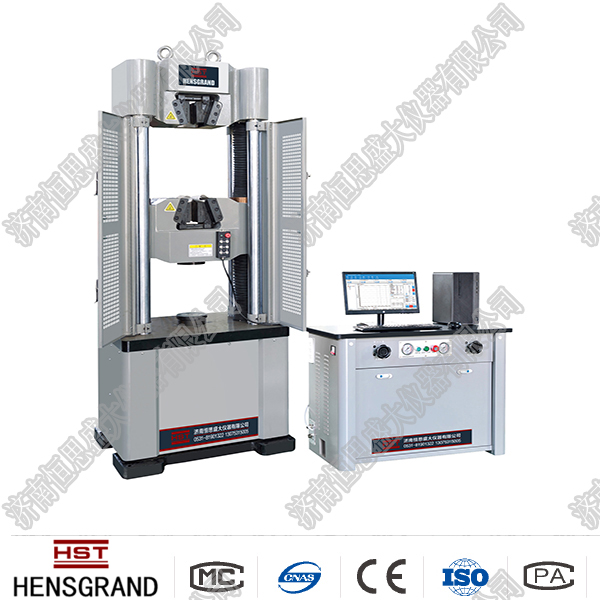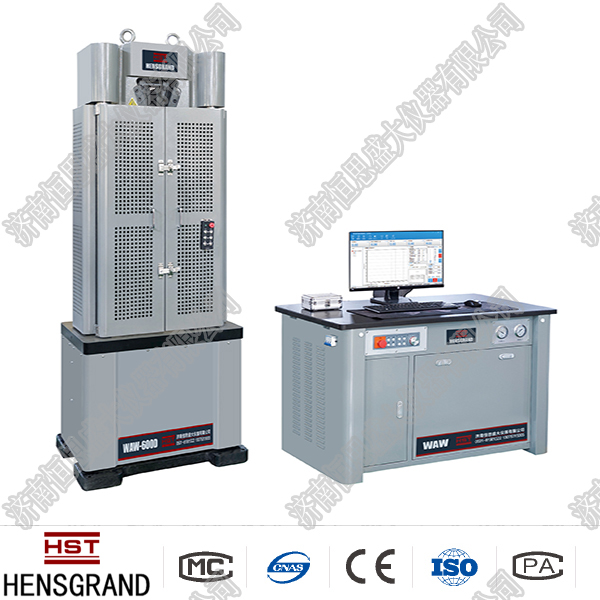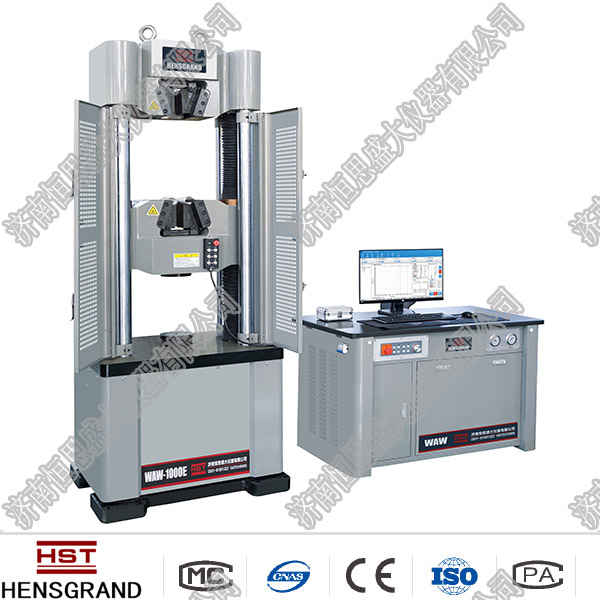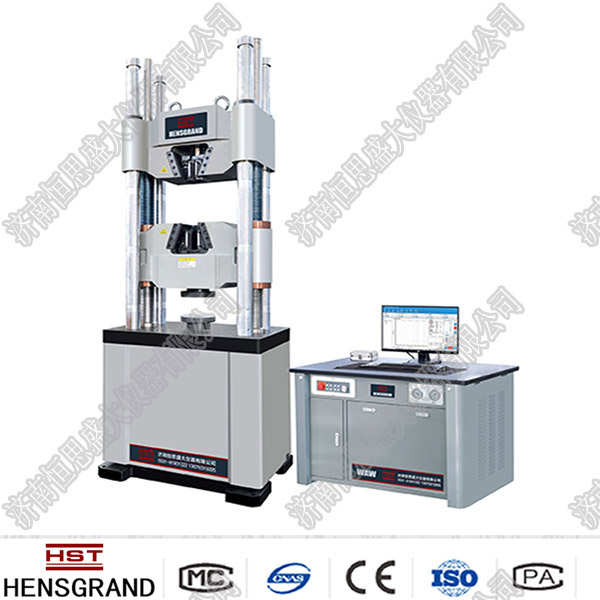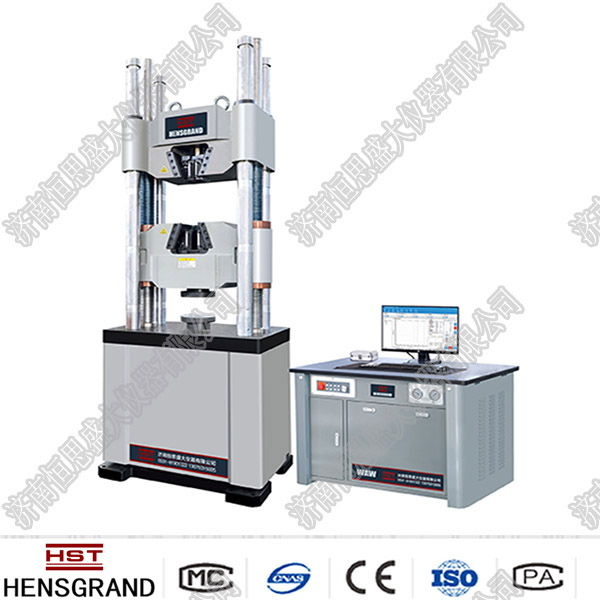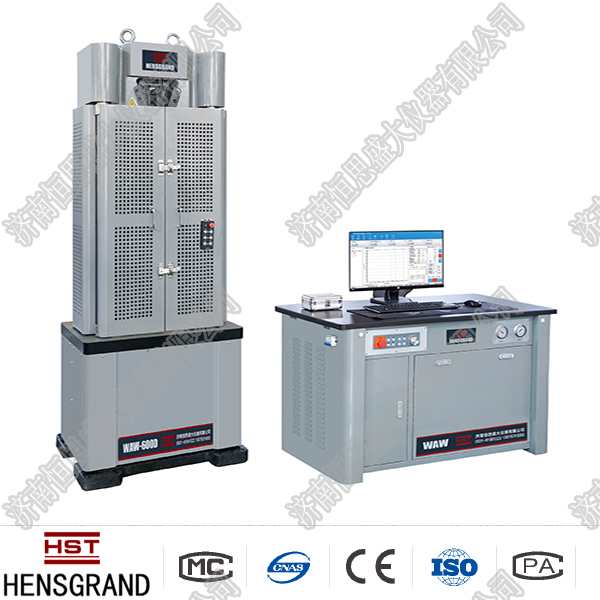Company News
Standard usage method of universal testing machine
Release time:2018-11-23 source:Jinan Hengsi Shanda Instrument Co., Ltd. Browse:
Close the fractures of the broken specimen together, use a vernier caliper to measure the diameter at the fracture and calculate the head volume; according to the following formula, the cross-sectional shortening rate of low-carbon steel can be calculated. From the damaged low-carbon steel specimen, it can be seen that the remaining elongation everywhere is not spread evenly. The closer you get to the break, the bigger the deformation, and the farther you get from the break, the smaller the deformation, so the measured value is related to the location of the break. In order to calculate the consistent value, the value measured by the fracture is in the section at the center of the gauge length. If the fracture is not in the section, the method of breaking is required to be converted by the method of shifting the fracture. The method is as follows: Assume that there are grids engraved between the two punctuation points, and the spacing between the grids before stretching is equal. On the longer right section of the fracture specimen, the grid is taken to the right from a line near the fracture, and the mark is, this is equivalent to placing the fracture at the center of the gauge distance, and then looking at the point to the point to the point, the same grid number is taken from the point to the left and marked with marks, so that the length revealed, the number of grids included in the length is equal to the grid number within the gauge length. When the fracture is very close to both ends of the specimen and the spacing between the head is equal to or less than twice the diameter, the universal testing machine generally believes that the implementation consequences are invalid and requires re-implementation.
During the inspection process, users will also have some minor doubts to the point. Let’s learn about it together.
a) Preparation of test pieces: The universal testing machine takes the gauge distance in the middle of the test piece or uses a foot marking to mark both ends of the gauge distance, and uses a vernier caliper to measure the center and the three diameters at both ends within the limit of the gauge distance of the test piece to calculate the cross-sectional area of the test piece.
b) Preparation of the test machine: First investigate the basic structure and operating methods of the test machine, and further study the operating procedures of the test machine. Based on the strength limit of low-carbon steel and the cross-sectional area of the specimen, the load required for tensile specimen is initially estimated, the appropriate measurement dial is selected, and the responsive pendulum is equipped, the thought device is opened, the force measuring pointer is adjusted to "zero point", and then the position of the chuck under the test machine is adjusted, and the specimen clip is installed in the chuck.
c) Implementation: After the test piece is clamped, the test piece is loaded slowly and averagely, and the installation is done with the active animation diagram on the universal test machine. The relationship curve between external force and deformation is drawn when the load is added to the point. The upper section of the stretching diagram is a straight line indicating the proportional relationship between the load and the specimen in this stage, that is, the elastic deformation limitations that conform to the Elastic Deformation Limitation of Hook's Law. When the load is added to the point, the dynamometer pointer stays still or suddenly drops to the point and then swings within a small limit. At this time, the deformation is added very quickly and the load is added very slowly. This explains that the stress of the data is active and the point response is called the upper activity limit and the response stress. Because the lower activity limit is relatively unchanged, the ordinary rule of the data is to take the value of the lower activity limit by the load value corresponding to the point by the original cross-sectional area of the specimen, that is, the activity limit of the low carbon steel is obtained. After the activity stage, the specimen must accept greater external forces before it can continue to deform. If plastic deformation is to increase, a load must be added, such as the point to point in the figure is the strengthening stage. When the load reaches the value point, the plastic deformation of the specimen is concentrated in a small section at a certain section. The cross-section of this section is shortened, which shows a "necking" scene. To close the machine, remove the broken specimen and tightly match the broken specimen together. Use a vernier caliper to measure the length between the gauge spacing of the specimen after breaking, and calculate the extension rate of low carbon steel according to the following formula.
- Previous article:Functional protection of horizontal tensile testing machine
- Next article:JB-500B semi-automatic impact tester
Recommended productsPRODUCTS


















